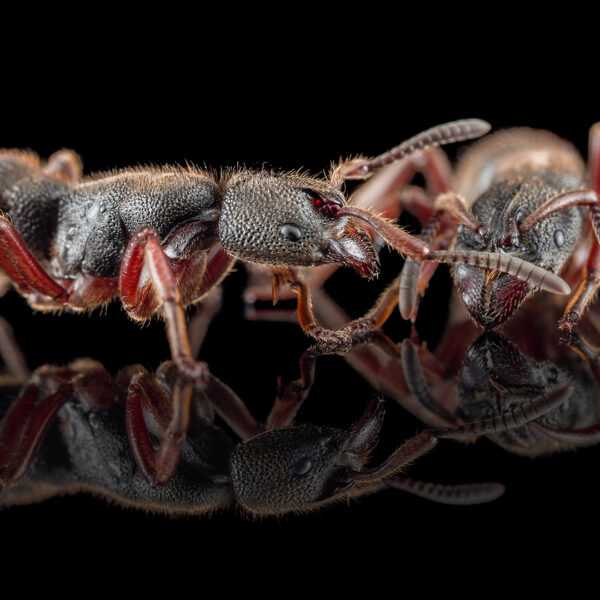Pseudomyrmex lynceus: A Fascinating Species of Ants
Pseudomyrmex lynceus is a captivating species of ants that both enthusiasts and researchers find intriguing. In this product description, we will explore various aspects of Pseudomyrmex lynceus, including their colony type, size, development speed, nutrition, and recommended nests for breeding.
Colony Type: Monogyny
Pseudomyrmex lynceus belongs to the monogynous species, where each colony consists of a single queen. This unique colony structure adds an interesting dynamic as the queen has the sole responsibility of reproduction and population maintenance.
Colony Size
An average Pseudomyrmex lynceus colony can reach a size of up to 5,000 workers. The queen measures approximately 8-9mm, leading the colony, while the workers, ranging from 6-8mm, perform tasks such as foraging, nest maintenance, and caring for the queen and brood.
Development Speed
Pseudomyrmex lynceus exhibits a medium development speed. This allows enthusiasts and researchers to observe their growth and maturity from eggs to adult workers over a reasonable timeframe, providing valuable insights into their behaviors.
Size
- Queen: The queen of Pseudomyrmex lynceus measures around 8-9mm in length, making her a striking presence within the colony.
- Workers: The worker ants have a slightly smaller size compared to the queen, ranging from 6-8mm in length. Their agility and efficiency are enhanced by their smaller stature, enabling them to navigate their environment effectively.
Color
Pseudomyrmex lynceus ants are predominantly black, giving them a sleek and mysterious appearance that allows them to blend seamlessly with their surroundings. This coloration aids them in moving discreetly in search of food and resources.
Nutrition
Pseudomyrmex lynceus ants have a varied diet consisting of insect food, syrup, and fruit. Insect food, such as cockroaches and crickets, provides them with the necessary proteins and nutrients for growth and development. They also enjoy syrup made from a mixture of water and honey in ratios such as 4:1, 3:1, or 2:1. Fruits serve as a natural source of nutrients, diversifying their diet.
Arena Humidity
Pseudomyrmex lynceus thrives in environments with a humidity level ranging from 60-80%. Maintaining this humidity range ensures optimal conditions for their activities, promoting healthy growth and development. The use of slots in the arena can help maintain the desired humidity level within the ant habitat.
Arena Temperature
Temperature plays a crucial role in the well-being of Pseudomyrmex lynceus ants. They thrive in temperatures between 22-28 °C, which provides them with the ideal conditions for their daily activities. Regulating the temperature within the ant habitat through slots in the arena ensures it falls within the recommended range of 20-24 °C.
Species Feature: Aggressive Species
Pseudomyrmex lynceus is known for its aggressive nature, adding excitement and intrigue to ant colonies containing this species. Their aggression is evident during territorial disputes with other ants or when defending their colony from potential threats.
Recommended Nests for Breeding
When breeding Pseudomyrmex lynceus, it is crucial to provide them with suitable nests that cater to their specific needs. Highly recommended nest materials include acrylic, gypsum, and aerated concrete. These materials offer durability, insulation, and moisture-retaining properties necessary for successful colony development.
In conclusion, Pseudomyrmex lynceus is a remarkable species of ants that offers enthusiasts and researchers a unique opportunity to observe and study their fascinating behaviors. From their monogynous colony structure to their aggressive nature and varied diet, these ants prove to be an exciting addition to any ant colony or research project. By providing them with the right conditions and suitable nests, you can create an environment where Pseudomyrmex lynceus can thrive and continue to captivate with their intriguing characteristics.
















Reviews
There are no reviews yet.